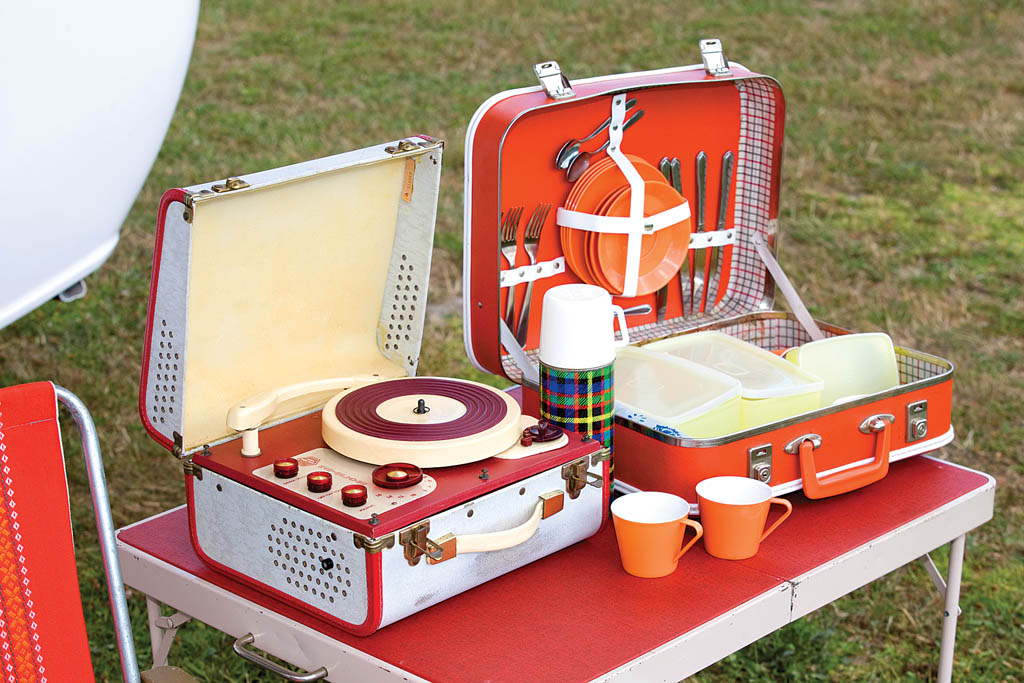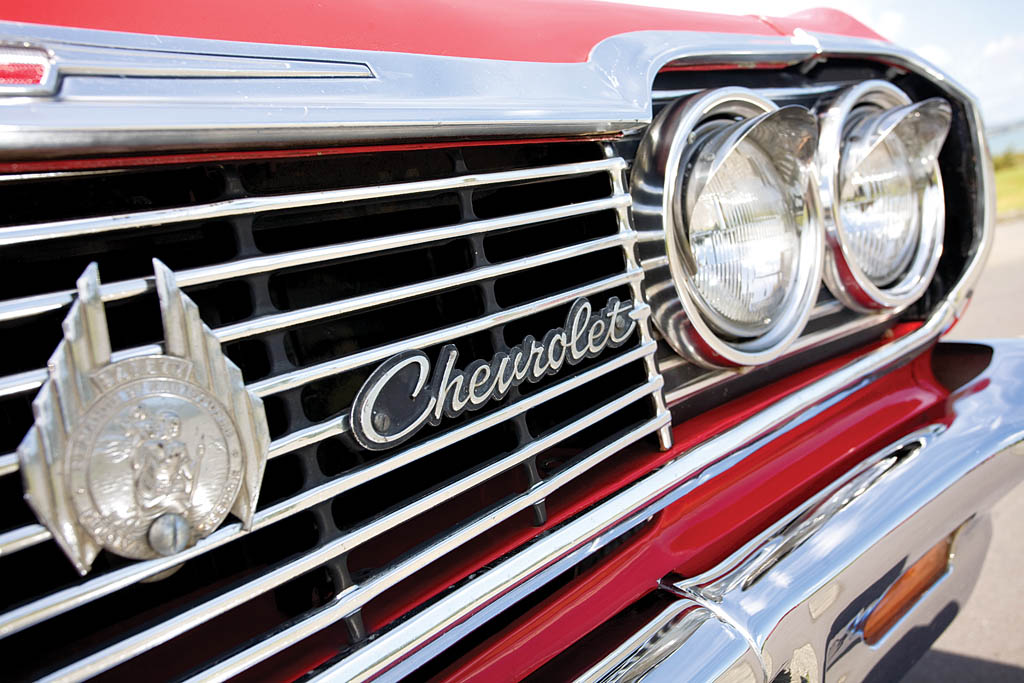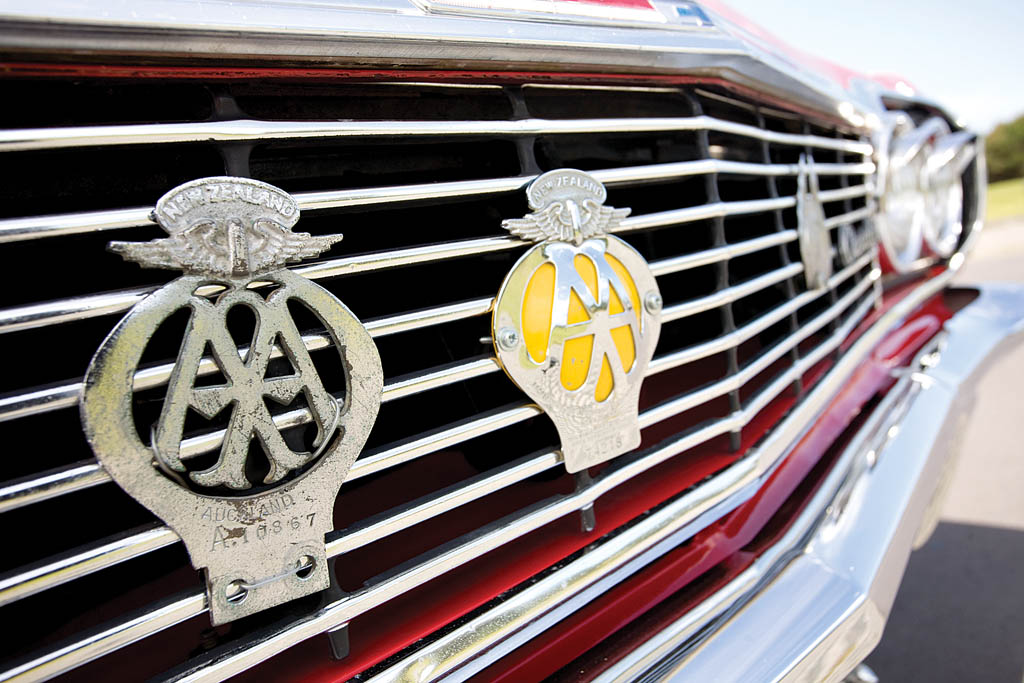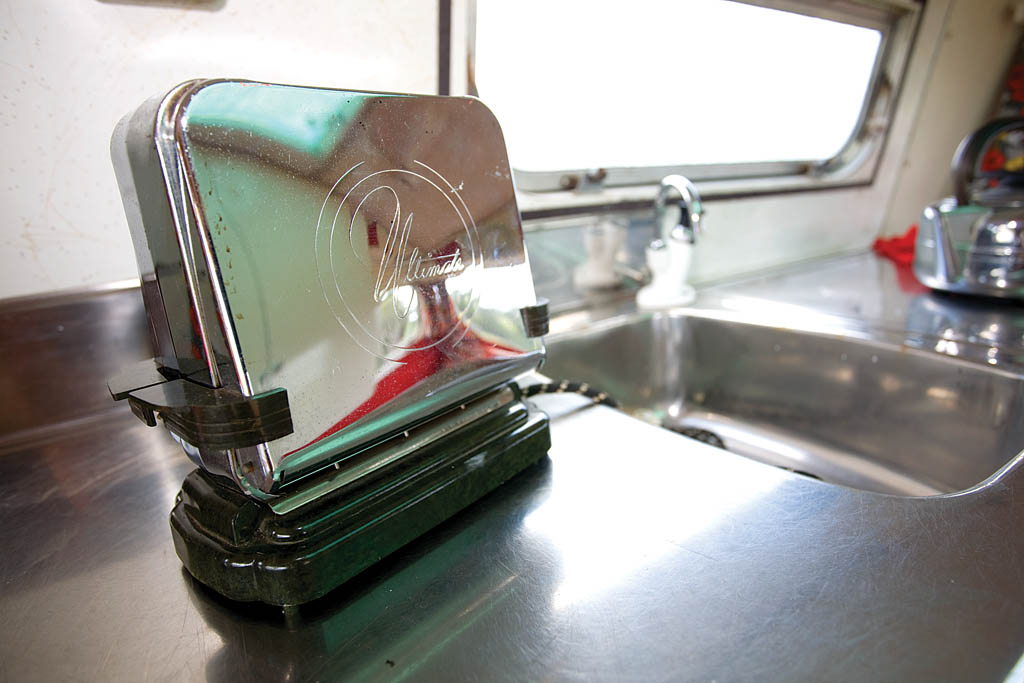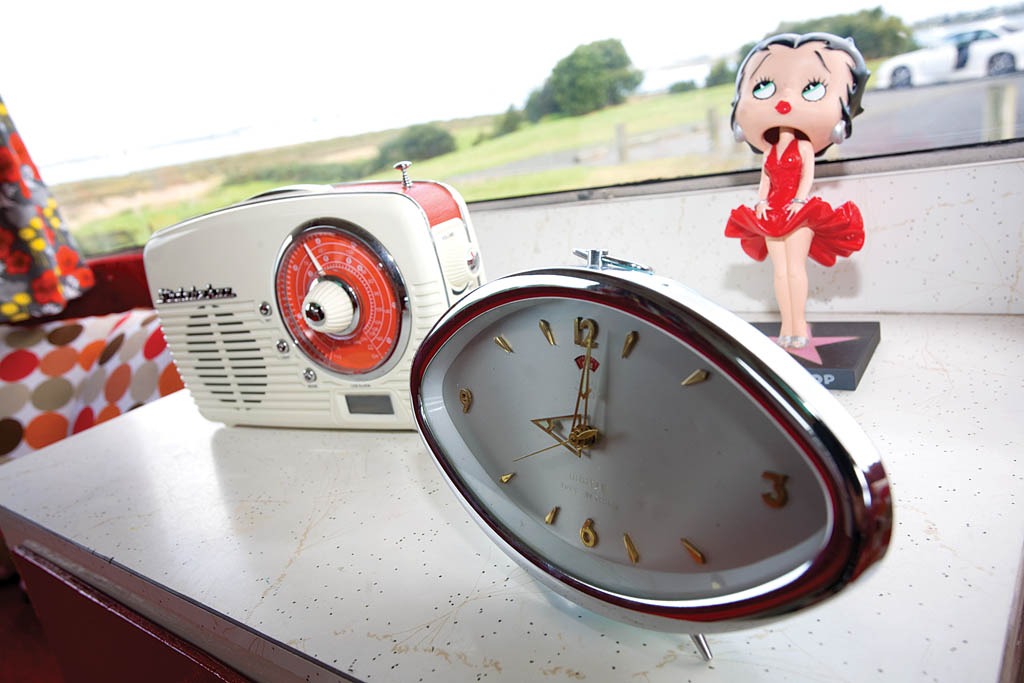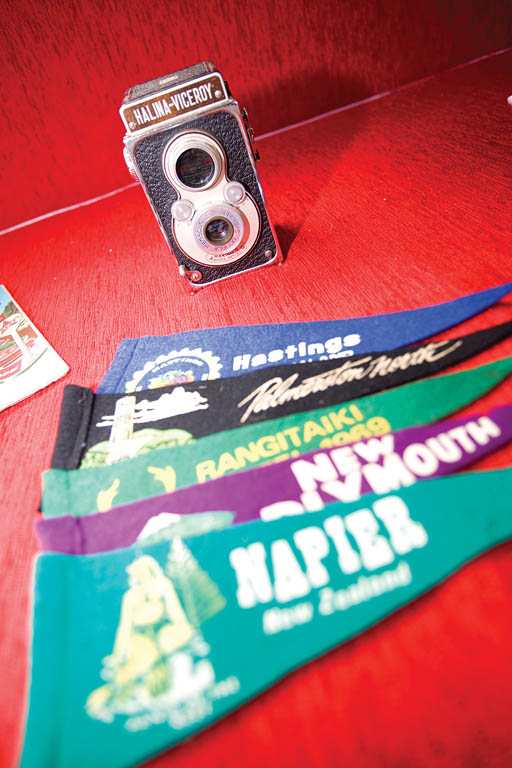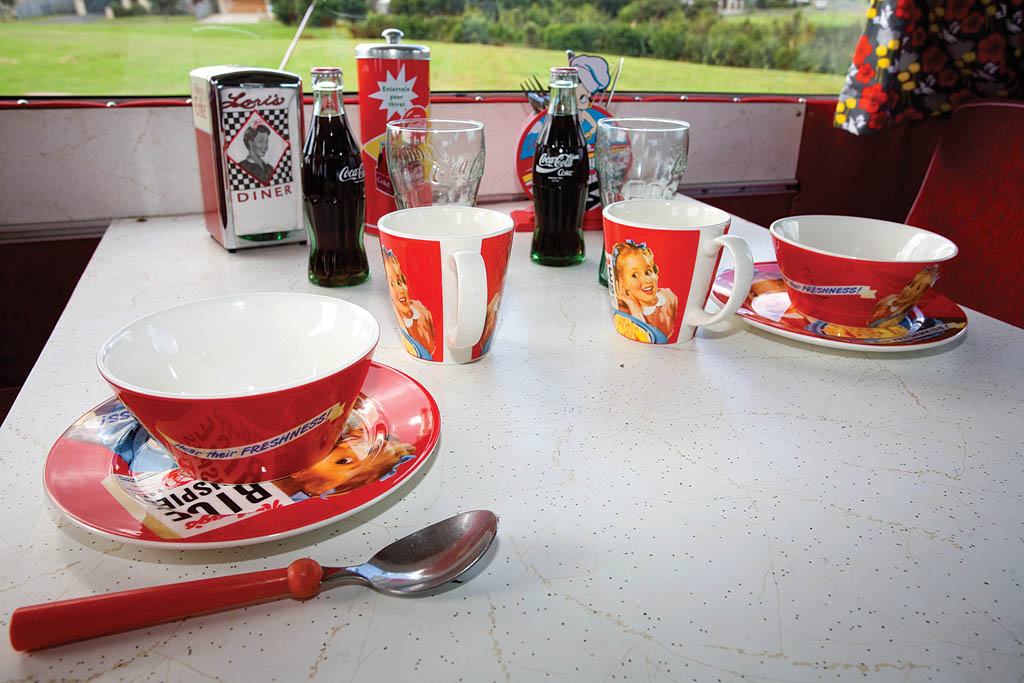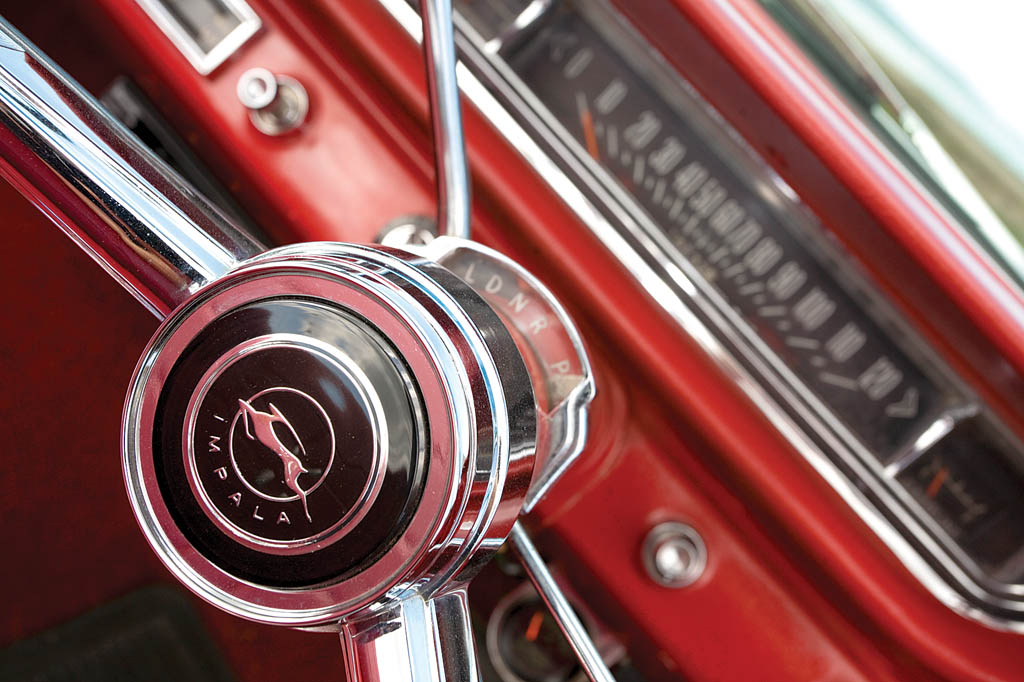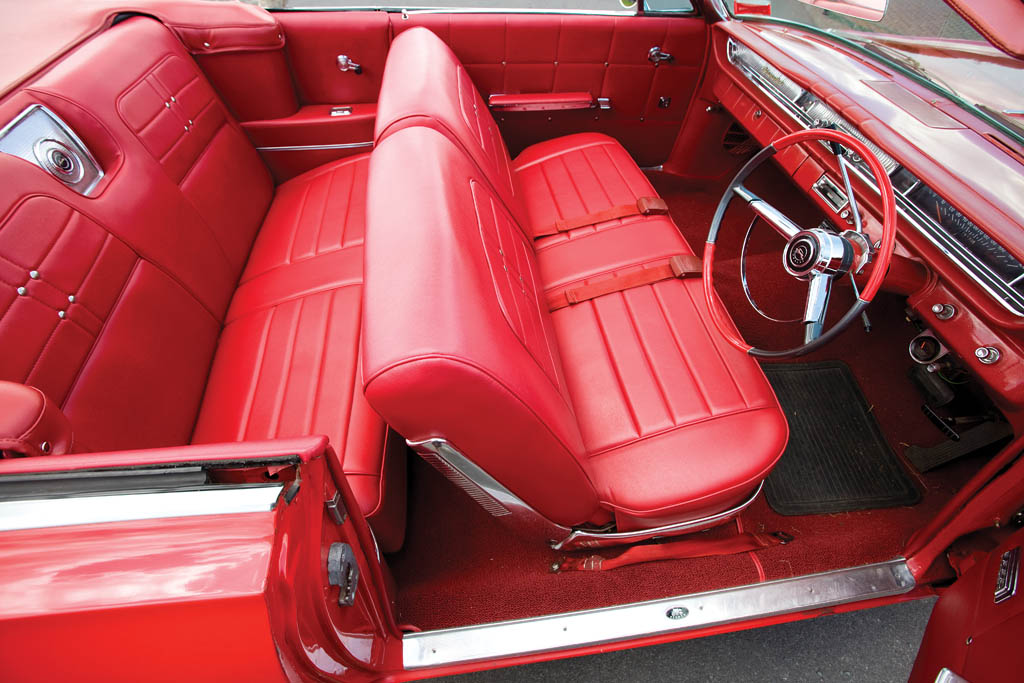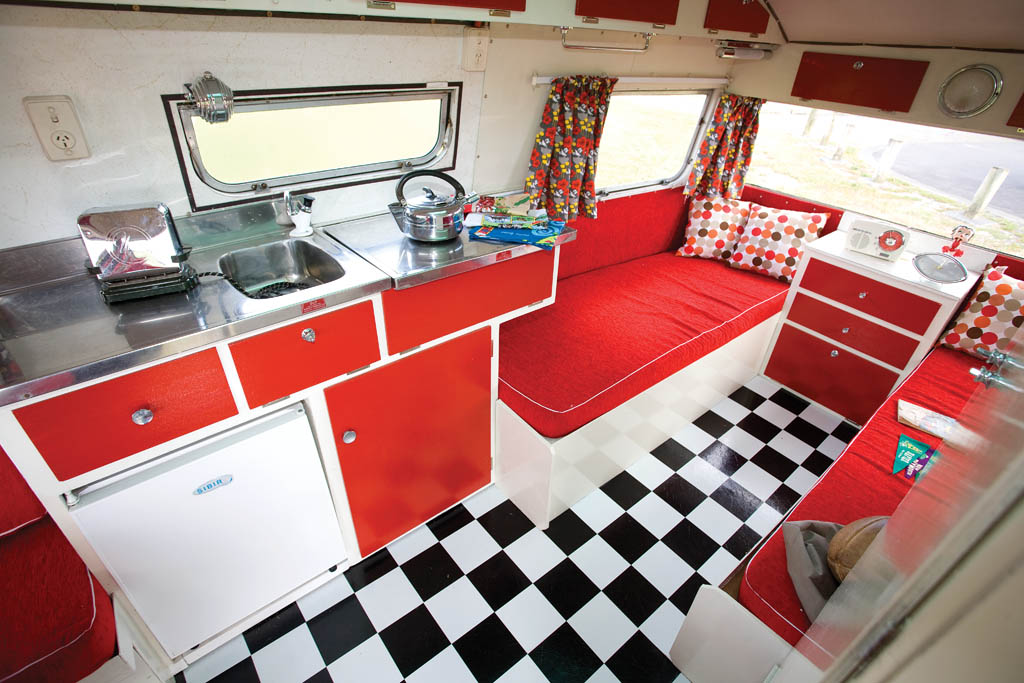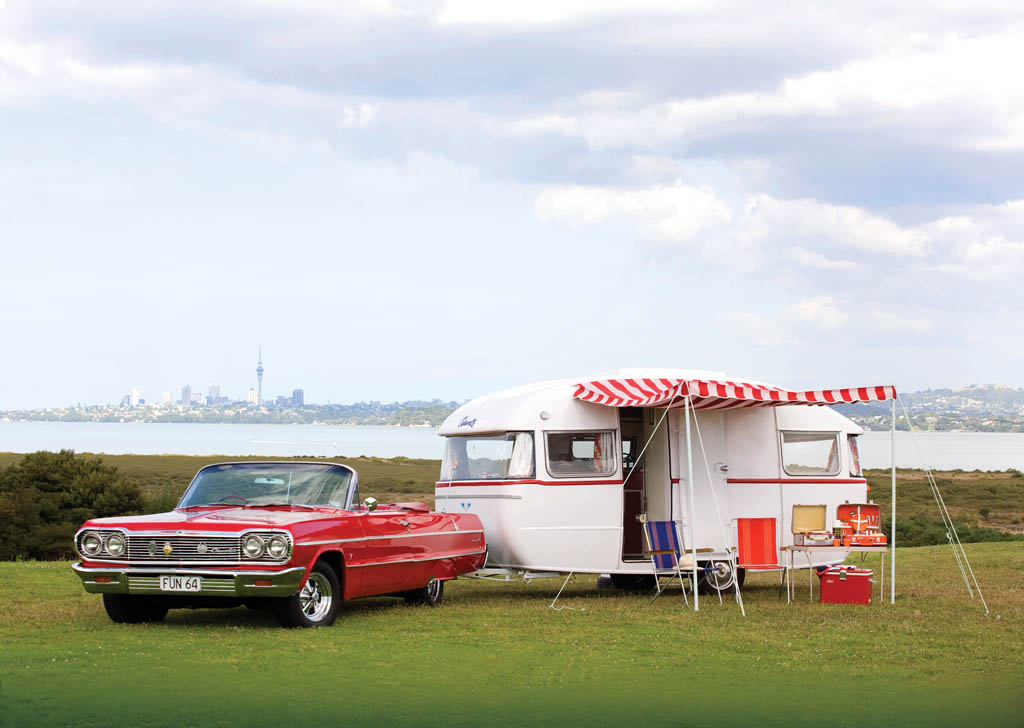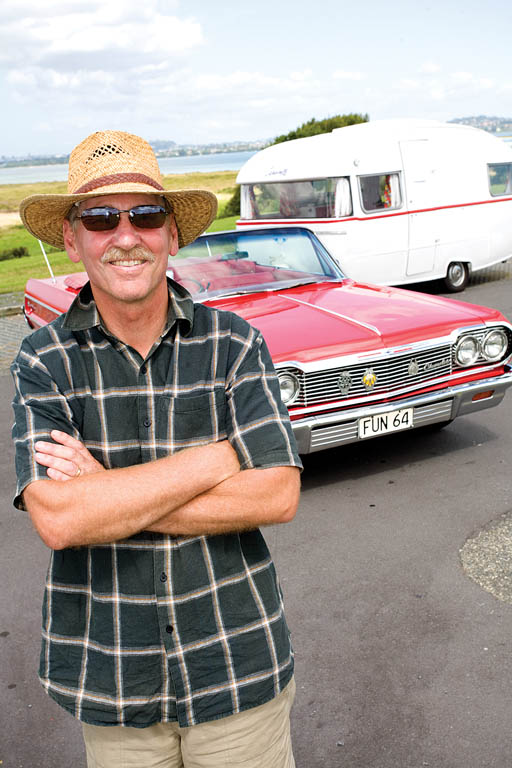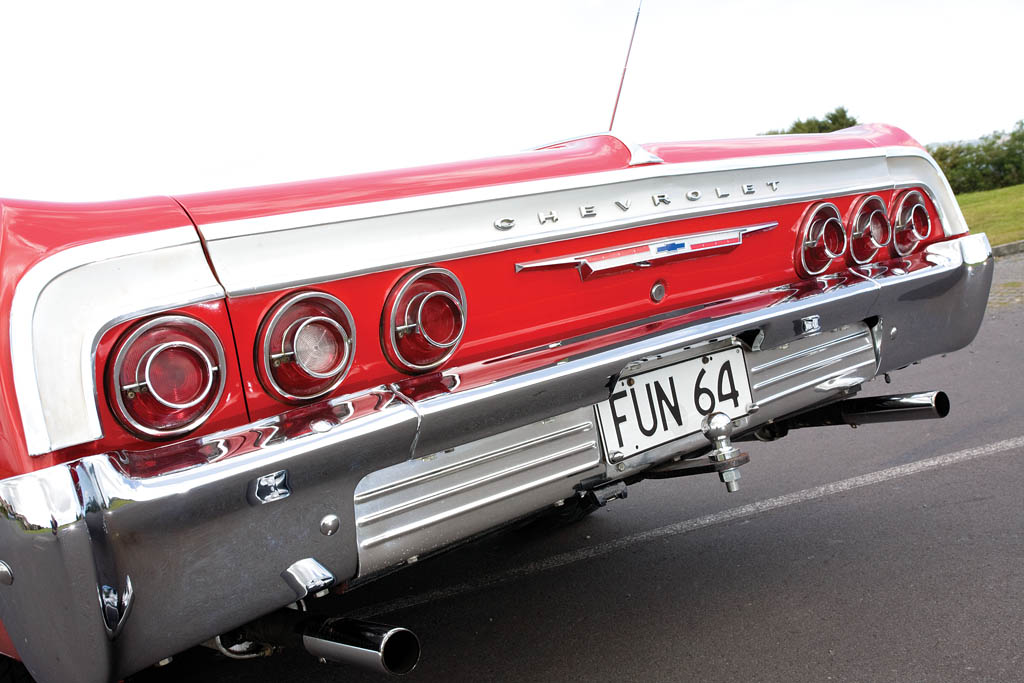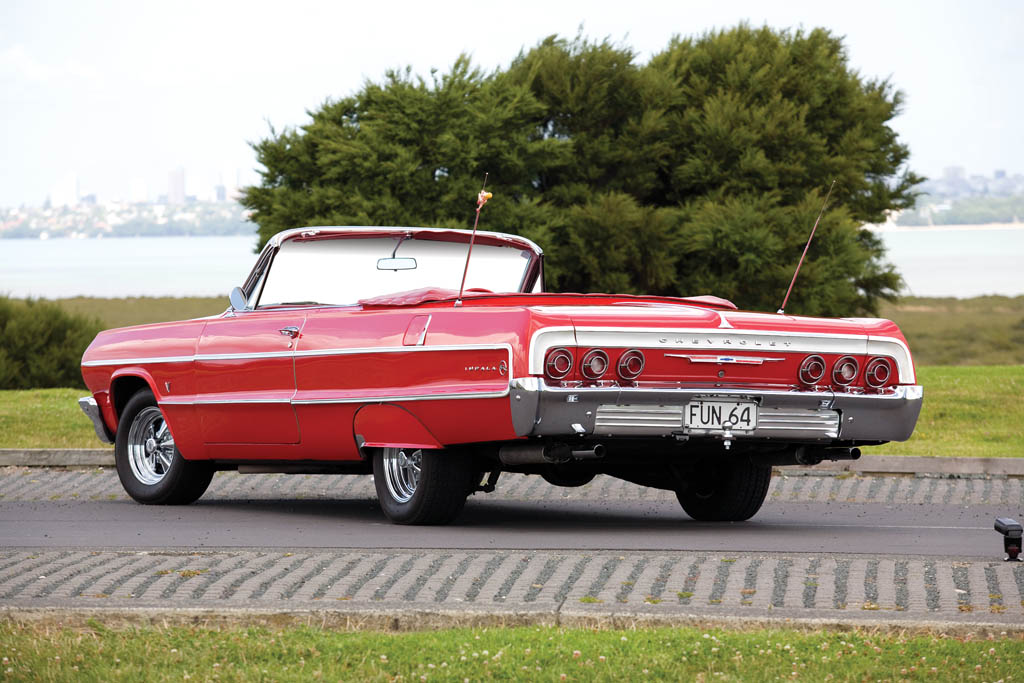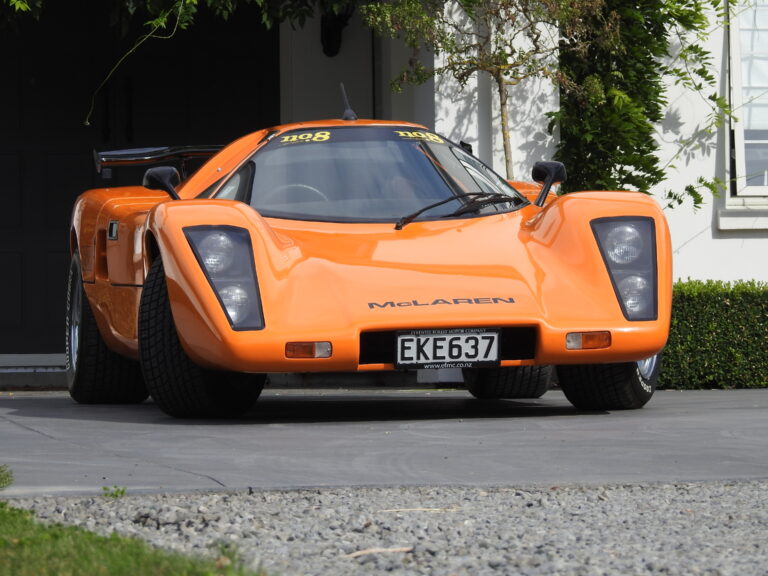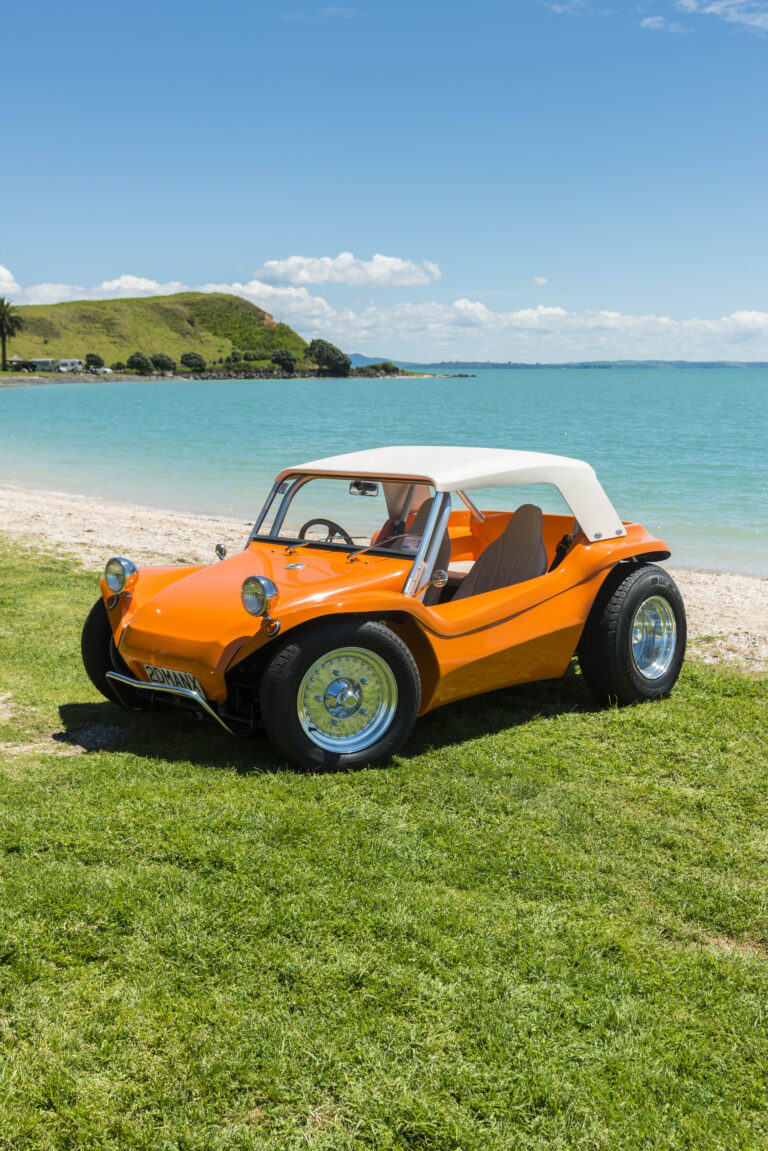data-animation-override>
“Published in New Zealand Classic Car Issue No. 219”

Kiwis have had a strong affiliation with caravans for as long as I can remember — and what better way to tow a caravan than with a classic, V8-powered convertible
Caravanning is part of our heritage, our culture — for many, the answer to our yearning for the great outdoors, sandy beaches and snow-capped mountains. No matter where you are in this great land of ours, you can be sure of one thing — you’re never too far from a camping ground. Although, over the past decade or so, I have noticed a steady decline in caravans on our summer roads.
Remember mum, dad and the kids, complete with all the crucial outdoor paraphernalia (bikes, kayaks and the like) tied to the roof, holding up queues of frustrated motorists as they struggle to haul the family caravan up hill and down dale to their destination? That’s a fading sight on our roads today. Instead, families are opting for mobile homes or camper vans — although still frustrating the heck out of most motorists. Whatever, they only have one thing in mind — the great outdoor experience. Of course, this has spawned a whole new industry for the tourism market in New Zealand, and many overseas tourists travel here just to share in the experience that we Kiwis often take so much for granted.
Open Air
I’m not too sure when convertibles became fashionable in New Zealand. From my recollections I rather doubt we felt it was trendy to own a convertible during the ‘hippy’ era of the ’60s. However, in the US it was a whole different ball game — convertibles were eye-catching and very fashionable.
Not surprisingly, Chevrolet alone accounted for more than a quarter of all cars in America between 1963 and 1964. Much more to its credit was the highly recognised, all-time favourite — the Chevrolet Impala convertible. Its appeal was so strong, young trendy adults preferred the Impala over virtually anything else on offer at the time. Wowed by Chevrolet’s fabulous-sounding V8 engine, lucky Impala drivers quickly recognised the satisfaction-guaranteed performance on offer.
Some time back in the ’50s, Chevrolet had felt it necessary to build a car similar to the more up-market Cadillac, offering customers who wanted more luxury something that would deter them from changing brands. In order to meet these needs it decided to build a new car. There were two things people indicated that they wanted — more luxury and more powerful engines. Chevy planned to build something bigger, faster, and more luxurious than its Bel Air, but something that middle-class Americans could still afford — enter the Impala.
Impala Debuts
Debuting in 1956, the Impala was first seen at the Chevrolet Motorama car show, which hit New York, Miami, Los Angeles, San Francisco, and Boston. This first Impala was a four-passenger coupe, with a strong connection to its stable-mate, the Corvette — indeed, this first car was aptly named the Corvette Impala and was even constructed of fibreglass, just like the Corvette.
At the time the Bel Air was the finest Chevrolet on the market, but the Impala was about to change this.
The first production Impala arrived in 1957 and was only offered as a sport coupe or convertible, giving it a sporty image which proved to be hugely successful.

The Impala was over 230mm longer, 100mm wider, and 50mm lower than the Bel Air models and also came with some exciting new options, including the new 5.7-litre (348ci) V8 and Level-Air suspension system. With Chevrolet’s new engine package the Impala was much faster than previous Chevys and, with its new suspension system, the car offered a much smoother ride than ever before.
Another major change was a new X-frame chassis design, which was built into all new Chevrolets to improve stability and comfort.
The Impala certainly looked the part, with chrome accents on the door and instrument panels, and a sport-style steering wheel giving the impression it was more luxurious than other ’57 Chevrolet models.
1n 1959 the Impala’s body changed to a sleeker, more agile and, most importantly, more contemporary look, enough for it to overtake the Bel Air in the sales stakes. In 1958 the Impala was only offered as a two-door coupe or convertible, but in 1959 there was a full line of Impalas including two-door hardtops, two-door convertibles, four-door sedans, and four-door hardtops.
Minor cosmetic changes were made to it in 1960, including the taillights going from a massive cats-eye shape to six separate round taillights — the latter becoming a familiar sight on the Impala over the next few years — while the car’s tail-fins were made less radical.
Swinging Sixties
Chevrolet decided to completely change the Impala in 1961. The car lost its rear fins completely, and gained an improved instrument panel layout, whilst keeping the signature six taillights. Many buyers were still crying out for options like Posi-Traction, a heavy-duty battery, heavy-duty brakes, springs, and shocks — all of which made Chevrolet rethink its strategy, and it introduced the Super Sport package.
Interestingly, the Impala was the first Chevrolet to offer a Super Sport package and it could be ordered on any body style, but in the future would only be available for sport coupes or convertibles.

Until that point the Corvette had been Chevy’s sports car, but now the Impala SS was right up there. The Impala SS could be optioned with either a high-performance 5.7-litre V8, or the new monster 6.7-litre (409ci) 261kW (350hp) V8 engine, and came equipped with power steering; power brakes; and heavy-duty brakes, shocks, and springs.
Chevrolet introduced the famous 5.35-litre (327ci) engine to the Impala line-up in 1962. This was to be a good year for the automotive industry, and the Impala SS was running hot nationwide as word rapidly spread.
In 1963 Chevrolet sold an impressive 832,000 Impalas. It was indeed ‘America’s car’ — up there with hot dogs and apple pie.
The ’63 Impala didn’t change all that much, and was the only Chevrolet full-size two-door sport coupe and four-door sport sedan offered that year. Chevy’s old big-seller, the Bel Air, was now only available as two-door and four-door sedans.
In 1964 the Impala changed in several ways. In Cadillac-style it received thicker bumpers, which made the car seem lower and heavier. The ’64 grille had a flatter profile than previous models, and other upgrades included an electric clock, emergency brake light, and special sporty steering wheel.
This year the Impala SS became its own line and, incredibly, more than 185,000 Impala SS models were sold. The regular Impala sold over 890,000, while the Bel Air only sold just over 550,000, proving the popularity of the Impala.
Today’s Impalas are said to have a lot to offer — but maybe not quite enough. The Impala image and heritage was never completely fulfilled, and they lack the style and performance of past generations. Even into the early ’90s Impalas were equipped with Corvette V8 engines, before they were replaced with more fuel-efficient six-cylinder units. Unfortunately the modern Impala makes no bold statements, blending easily into a car park full of humdrum sedans.
Chevy Connection
One person who is definitely keeping the Impala tradition alive and well is Jeff Matthews, who owns this magnificent 1964 Chevrolet Impala.
Jeff has been a car man most of his life, in fact earlier that most it seems, because his mother tells the story of how Jeff would often make car noises whilst sitting in his high chair as he mashed his way through whatever tasty, baby food delights were in front of him.
Jeff’s first experience with classic cars was with those of English origin, although he soon discovered that, in his opinion, they were “unmotorable.” Instead, he decided to try something a little different — an American classic. First up was a 1936 straight-eight Hudson, which he purchased in the early ’80s. From there, Jeff moved on to something a little more modern — a 1950 Chrysler followed by a 1961 Dodge.
At this point Jeff decided a convertible was the way to go, and placed an advertisement in the local newspaper to see if anything would come up. Sure enough, the owner of a 1964 Chevrolet Impala, which had been sitting in a shed in Waitakere for over 10 years, contacted him. Jeff was undeterred by the level of work that would be required to bring Chevy up to scratch, he knew the car was basically sound and unmolested, so he bought it.
He has now owned the car for about 15 years, and during that time has treated it to a new, bright red paint scheme, and a new interior. As well, all the Impala’s bright-work has been re-chromed. Jeff replaced the original wheels with a set of chrome Cragar SS wheels to complement the style of the car. Other than this, the Impala is completely original, sporting the original 4.63-litre (283ci) engine, automatic transmission, suspension and brakes.
Another point of interest is that General Motors originally brought this car to New Zealand in 1964 for the Petone Auto Show, and it is one of only 68 right hand drive 1964 Impala convertibles built in Canada.
The Impala fuelled Jeff’s passion and desire to increase his fleet of American cars, and he subsequently went on to acquire a 1972 Pontiac Grand Prix, 1961 Oldsmobile Starfire and — his all-time favourite — a 1958 Chevrolet Impala sports coupe. A few years down the track, Jeff realised that owning four huge American cars was a little excessive, and he sold off the Pontiac and the Oldsmobile, keeping his two Chevrolets.
Broadened Horizons
During this time Jeff had become increasingly interested in old caravans. He now owns two period caravans, one of which you see here — a 1966 Caravelle. The other, believed to have been built by the Auckland Caravan Company around 1953, is currently under restoration.

Jeff has spent many hours bringing his 1966 Caravelle back to life with new exterior paint, new windows and a refurbished interior — all in keeping with the ’60s period. Jeff also enjoys collecting art deco-style antiques and period-style items for his caravans — including an old record player/radiogram, camping set and original-style portable table, not to mention the curtain and awning fabric which was specially imported from the US.

Jeff is unsure of the Caravelle’s origins, but believes they were originally built in the Hawkes Bay during the ’60s for three years, and the moulds could have originally been used to make caravans in Australia during the late ’50s.
The Caravelle looks perfectly at home behind the magnificent 1964 Chevy Impala convertible, although Jeff has yet to take the pair on an extended camping trip. He has opted to display the rig whenever possible, most recently at the Kumeu Hot Rod Festival, where his summer holiday combination made quite an impact.
It’s amazing how many people have fond memories of childhood camping holidays. As I said earlier — it’s all part of our culture, part of our heritage.
1964 Chevrolet Impala Convertible – Specifications
Engine: Chevrolet Turbo Fire V8
Capacity: 4.63 litres (283ci)
Bore/stroke: 98.425 x 76.2mm
Valves: Two valves per cylinder/ohv
C/R: 9.25;1
Max power: 145kW (195hp) @ 4800rpm
Fuel system: Rochester 2bbl
Transmission: Three-speed manual or auto
Dimensions:
Overall Length: 5331mm
Width: 2022mm
Wheelbase: 3022mm
Kerb weight: 1599kg
Words: Ashley Webb Photos: Dan Wakelin
This article is from Classic Car issue 219. Click here to check it out.


